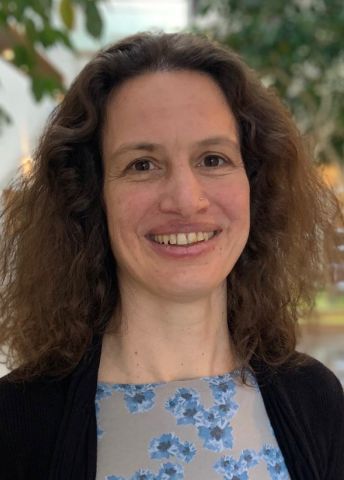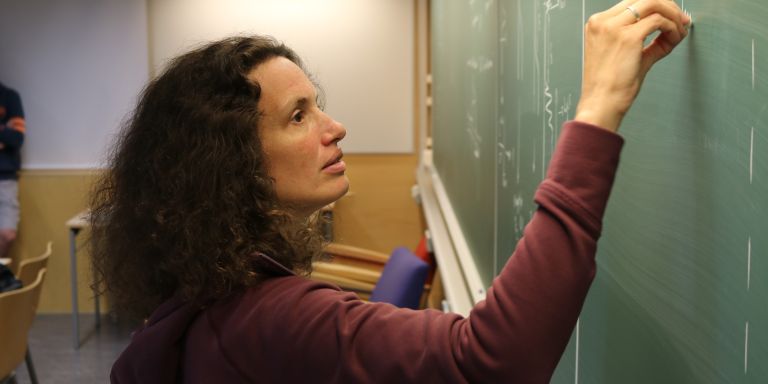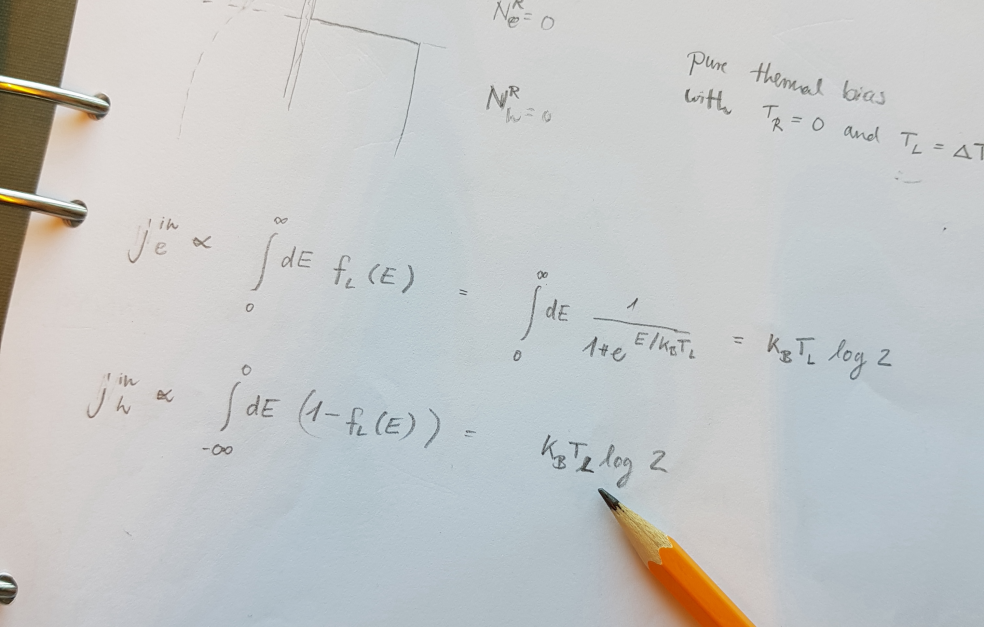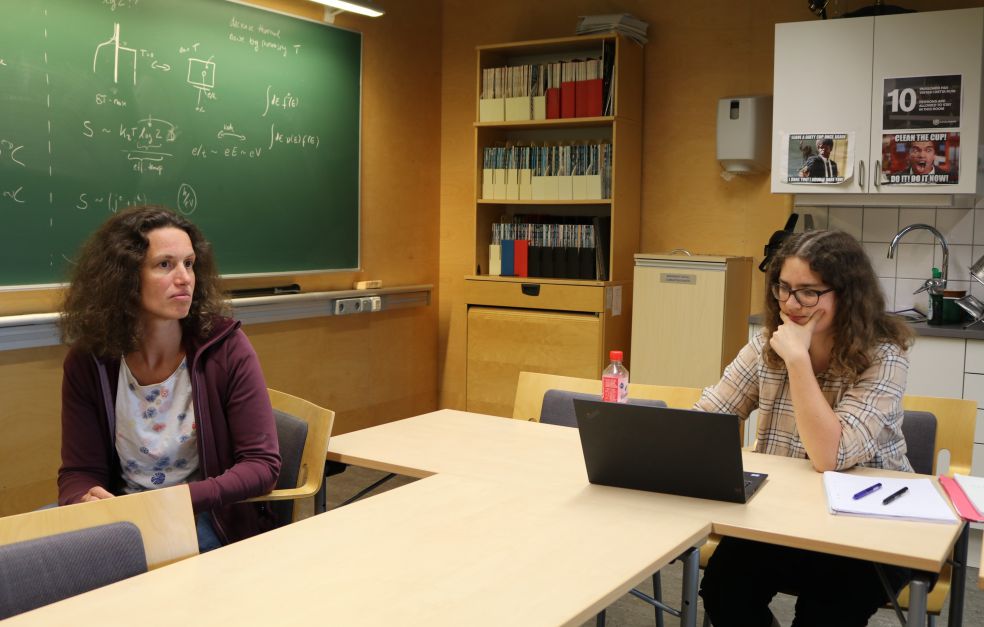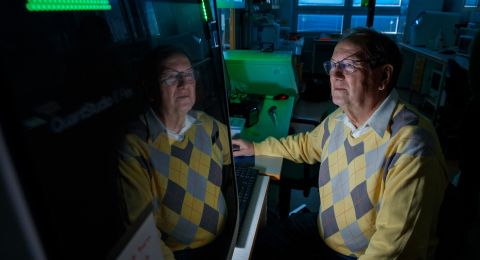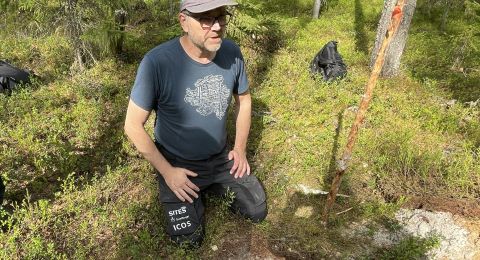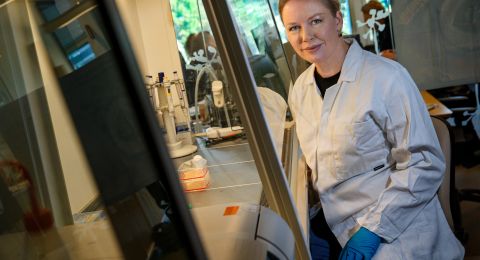When electronics moves down to quantum level, a number of difficulties manifest themselves, along with undiscovered potential. Wallenberg Academy Fellow Janine Splettstößer believes that surplus heat from nanoelectronics may offer unexpected benefits.
Janine Splettstößer
Professor of Microtechnology, Nanoscience and Applied Quantum Physics
Wallenberg Academy Fellow, prolongation grant 2019
Institution:
Chalmers University of Technology
Research field:
Quantum mechanical phenomena in nanostructures
There are numerous challenges when physics takes the step down to quantum level, where many of the rules of classical physics no longer apply. Much remains to be discovered here, particularly in systems that are not in equilibrium, but are impacted by their surroundings in various ways.
“My short-term aim is to improve our understanding of the nanoscale thermodynamic effects that occur in electronic circuits. This may pave the way for applications we didn’t know were possible,” says Splettstößer.
She defines herself as a theoretician, mostly interested in fundamental physics, and prefers to use a pen and paper, or writing in chalk on the blackboard in her office. But she likes to discuss and collaborate with experimentalists.
“The theoretical work that I am doing is to the largest extent analytical. I really like the challenge involved in increasing our understanding of a field by developing new theories. It’s true there are many difficulties – from creating the right prerequisites for a theoretical model to confirming a given theory experimentally. But after all, if it were easy, someone else would already have succeeded.”
Understanding quantum mechanical impact
When she joined Chalmers University of Technology in 2013 her research centered on understanding what happens when electronic circuits become so small that various quantum mechanical effects occur in them. Electrons may assume different states simultaneously, or be entangled with each other over great distances.
New transistors are being developed rapidly. They are ever smaller, and will soon reach a boundary where the need to look for new solutions arises and here quantum effects could be of interest. But the rulebook of physics still has a number of blank pages here, not least when it comes to systems that are not in equilibrium.
“If you subject a system to impact of various kinds, like turning a switch on or off, you can learn a lot more about its quantum mechanical properties. These include previously undetected effects. Understanding them requires a combination of theories.”
Over the past few years Splettstößer’s attention has turned increasingly to the heat generated by the very smallest electronic circuits. Just as in a conventional computer, surplus heat forms as the circuits work. But the heat generated in quantum mechanical systems cannot be described using traditional physics. And problems may arise as the sensitive quantum circuits become overheated. This raises questions such as whether it might also be possible to create cooling technologies for nanoscale systems on-chip, or whether the heat can be extracted by harnessing the quantum mechanical properties.
“It’s essential that we’re able to manage the energy situation even in these nanoscale systems. We can do this by gaining a better understanding of the impact of thermodynamics. It might be possible to use the heat as a function in a circuit,” Splettstößer says.
“The Wallenberg Academy Fellow grant is of vital importance to me. It has given me the basic funding for free research, and has allowed me to become part of a network and a context.”
Nanoscale steam engine
She draws a parallel with the classical steam engine, in which heat is used to generate steam to drive a piston, providing a locomotive or ship with power. In quantum mechanical systems, electrons or photons are the active medium instead of steam. It might even be possible to have single particles drive or perform different tasks in nanoscale systems.
“We need to develop our theoretical tools so we can gain a fundamental understanding of what happens at this scale. To do so, I’m combining my knowledge of nanoscale electronic systems with the field of quantum thermodynamics.”
Quantum thermodynamics is used to describe heat transport in quantum mechanical systems, and has attracted growing attention in tandem with the development of quantum computers. And there are other applications in this field, such as ultra-efficient conversion of heat into electricity.
Although Splettstößer’s work is purely theoretical, it is important always to keep potential applications in mind. She elaborates:
“By building on this fundamental knowledge, I may be able to create an opportunity for others to use it to develop practical applications.”
Free research essential
Splettstößer completed her studies in Germany, her home country. Since then, she has held positions at a number of European universities in Italy, Switzerland and other countries. It was not until she joined Chalmers as a Wallenberg Academy Fellow in 2013 that she and her husband, who is also a physicist, were able to find work and put down roots in the same city.
“My field is a highly international one, and requires researchers to live a peripatetic existence in pursuit of their research goals. After ten years on the move, we’ve found a place for our family. Chalmers offers an environment with good colleagues and the opportunity to collaborate with experimental researchers,” she says.
She points out that it is hard to set more specific goals than increasing knowledge in the field. Sometimes it may even be counterproductive:
“Research has to be dynamic: we should move in line with the discoveries we make. This requires a degree of openness and freedom that is possible with funding like the Wallenberg Academy Fellow scheme.
Text Magnus Trogen Pahlén
Translation Maxwell Arding
Photo Lovisa Håkansson, Janine Splettstößer
